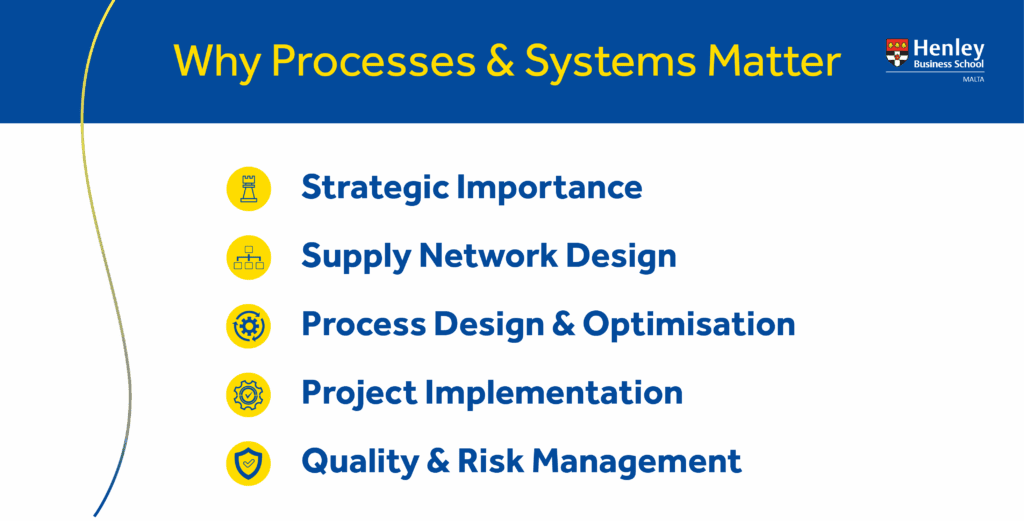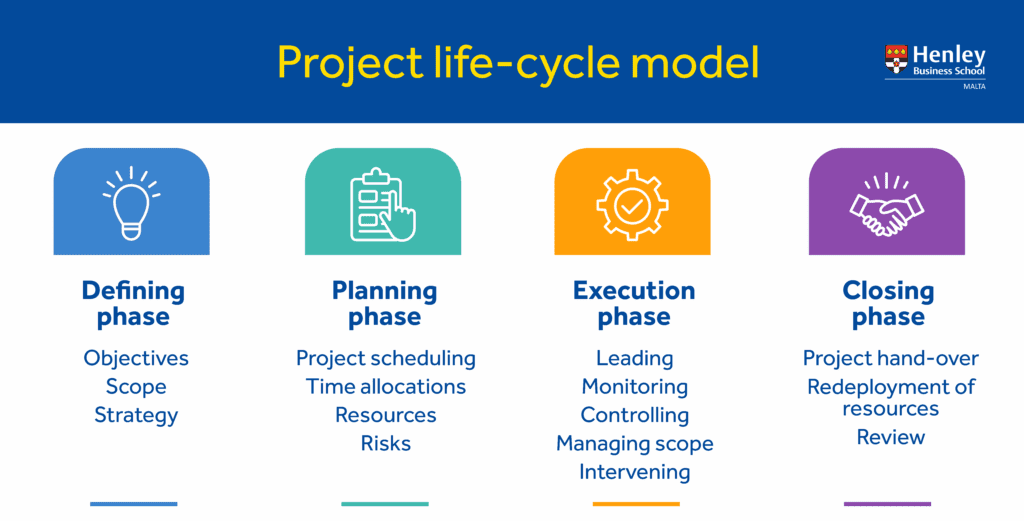Within today’s business environment, organisations often find themselves struggling to find the right balance between delivering their goods or services in an effective and efficient manner, while maintaining control over their costs, the quality of their product and managing any potential risks. To succeed in this dynamic and fast-changing business environment, organisations must be well versed in designing, implementing and refining their processes and systems. By adopting a structured approach to operations, organisations can boost their productivity, improve their customer’s satisfaction ratings and ensure their long-term sustainability. This article explores some of the key aspects that are involved in the effective management of processes and systems and provides an overview of some of the business models that are mostly used by business managers. It also highlights the strategic role that process thinking, systems management and continuous improvement can play in the overall performance of any organisation.
Processes and systems: A strategic backbone for any organisation.
A process can be broadly defined as a set of activities which are structured or designed in a way that leads to a specific or desired outcome. A system, on the other hand, consists of interconnected elements which may include one or more processes, people or organisational stakeholders, resources, information, and technology. The primary scope for an organisation to have a system in place is to allow it to work both efficiently and effectively. It is therefore more crucial for an organisation to align its processes and systems with its overall business strategy. This alignment ensures that the organisation’s operational capacity and abilities meet the market’s demands, but more importantly, it also allows organisations to remain relevant and competitive over time.
An organisation that is in the process of reviewing or aligning its processes and systems with its strategic intent could make use of a number of business frameworks such as the Align-Deploy-Operate (ADO) model, a widely adopted business framework which is specifically structured to integrate the organisation’s strategic intent with the operational delivery. Another framework which can be useful in this regard is commonly referred to as the Four V’s model (Slack, 2016). This model provides a structured framework for businesses to evaluate their processes based on Volume, Variety, Variation and Visibility and can be very useful for organisations wishing to fine-tune their operations to better meet their demand characteristics. This model has other applications within the business context and can be effectively used in various other stages related to processes and systems.
Designing and managing the supply network
A resilient and dependable supply network can be a major asset for any business aiming to achieve operational efficiency. This becomes even more valuable when the supply chain dynamics within a business are aligned with the strategic intent of the business. Business managers who are involved in designing or managing their supply networks can rely on a number of models which can guide their decisions, providing structure and clarity to their decision-making process. The Suppliers-Input-Process-Output-Customers (SIPOC) is a strong process-mapping model rooted in Six Sigma methodologies that could help map out the entire value chain, while enabling smooth integration between suppliers, internal processes and customer or other stakeholder needs. There are a number of important decisions that managers need to consider when designing their supply network, and while the nature of the business or the industry will have a weighting on these decisions, there are some key considerations which can be common across multiple businesses. These considerations might include outsourcing strategies, selection of location, capacity planning, cost, flexibility and service quality. Contingency theories are also widely applied to supply network design to allow for potential market fluctuations.
Project Management and implementation
Larson and Gray (2014) provide a generic project life-cycle model which looks at four distinct phases of any project.
These can be summarised as follows:

This model is widely used in business but is particularly liked by project managers as it provides a simple, yet effective framework to manage and structure the different phases of projects. In the real business world, project managers often find themselves concurrently dealing with multiple projects. Their ability to manage and allocate resources effectively across multiple projects may therefore be pivotal to ensuring the success of each project.
Performance measurement and risk management
Peter Drucker’s statement “You can’t manage what you can’t measure” can be of particular relevance when it comes to measuring process performance. Performance measurement has two distinct outcomes. On the one hand, it can confirm if the process implemented is achieving the required outcome, while on the other hand, it can highlight deficiencies or inefficiencies and thus guide the required corrective action. The latter aspect is what keeps a process relevant over time or in a changing business environment. Many businesses rely on Key Performance Indicators (KPIs) or identify Critical Success Factors (CSFs) to measure the performance of their processes. These have proven to be very useful tools for tracking progress and driving continuous process improvements. One main challenge associated with process performance measurement relates to the measurement of intangible (but equally important) business aspects like reliability, responsiveness, assurance and empathy. The identification of ways on how such intangible outcomes can be measured will provide businesses with a more holistic view of their process/es or project/s performance.
Risk Management is another critical aspect of a process and systems oversight. Especially in today’s dynamic business environment and the somewhat unstable macro environment we are facing today, businesses must proactively identify and mitigate any risks that could affect their process, supply dynamics or their operational efficiencies. The force field analysis is yet another model which might help businesses identify any driving or restraining forces that could have an impact on their overall risk management strategies.
Managing Quality and Continuous Improvement
Quality management is a fundamental aspect to consider for process and system effectiveness. Mostly all businesses will stand to gain by moving from a reactive-based approach to quality management to proactive approaches such as TQM. Some proactive approaches may include listening to customers and understanding their evolving needs, identifying any gaps in expectations, and implementing Lean and/or Six-Sigma methodologies to drive further efficiencies. Continuous improvement methods such as Kaizen, a philosophy of incremental employee-driven improvements, and frameworks like the Plan-Do-Check-Act (PDCA) cycle, originally developed by Walter Shewhart and later popularised by W. Edwards Deming, can also provide businesses with further structure to guide their continuous improvement efforts. Through the adoption of a culture of continuous improvement and innovation, businesses can stay ahead of their competition while constantly adapting to the changing market conditions.
Conclusion – The future of process and systems management
As businesses evolve and transform to accommodate the needs of an ever-changing market, their ability to design, manage and improve their processes and systems will not only remain relevant but might potentially become what differentiates them from other businesses. It is almost inevitable that the emerging trends in process automation, artificial intelligence and digital transformation will keep reshaping the approach that businesses take towards their quest to achieve operational efficiency. Since transformation and change lie at the core of processes and systems management, this growing digital influence may simply be a natural progression – one that does not dilute its relevance, but rather redefines the way that businesses approach it.
Published 1st June 2025
 Managing processes and systems is also a core module within Stage 1, “Managing in the Organisation”, of our Henley Executive MBA programme. This module explores key principles behind delivering goods and services through a systemic approach. Integrating operations, information systems and project management, it examines process design, implementation and operation in various contexts. You will critically evaluate how these concepts apply to specific organisations, aligning processes with business strategy. Learn more about the MBA
Managing processes and systems is also a core module within Stage 1, “Managing in the Organisation”, of our Henley Executive MBA programme. This module explores key principles behind delivering goods and services through a systemic approach. Integrating operations, information systems and project management, it examines process design, implementation and operation in various contexts. You will critically evaluate how these concepts apply to specific organisations, aligning processes with business strategy. Learn more about the MBA










